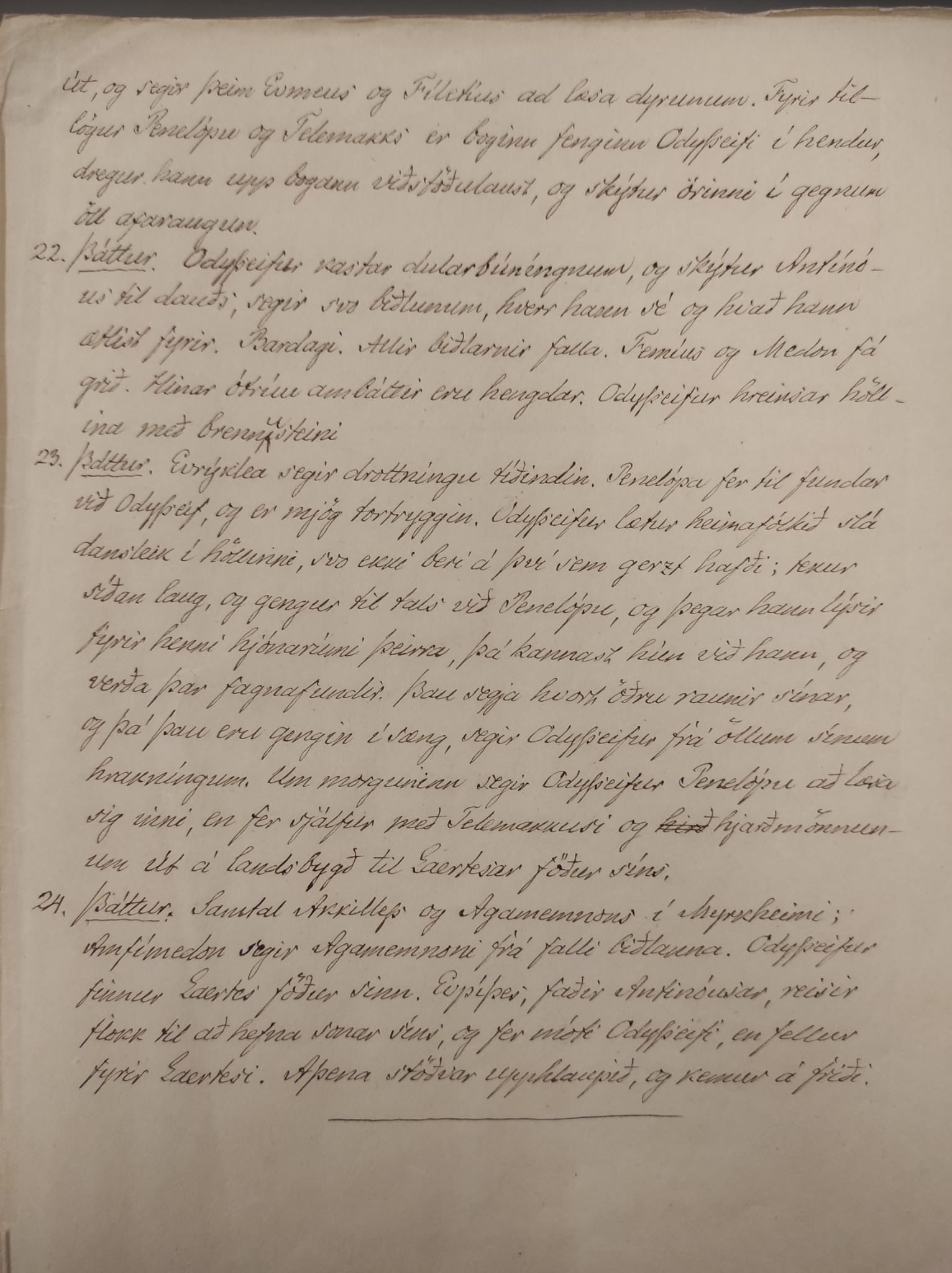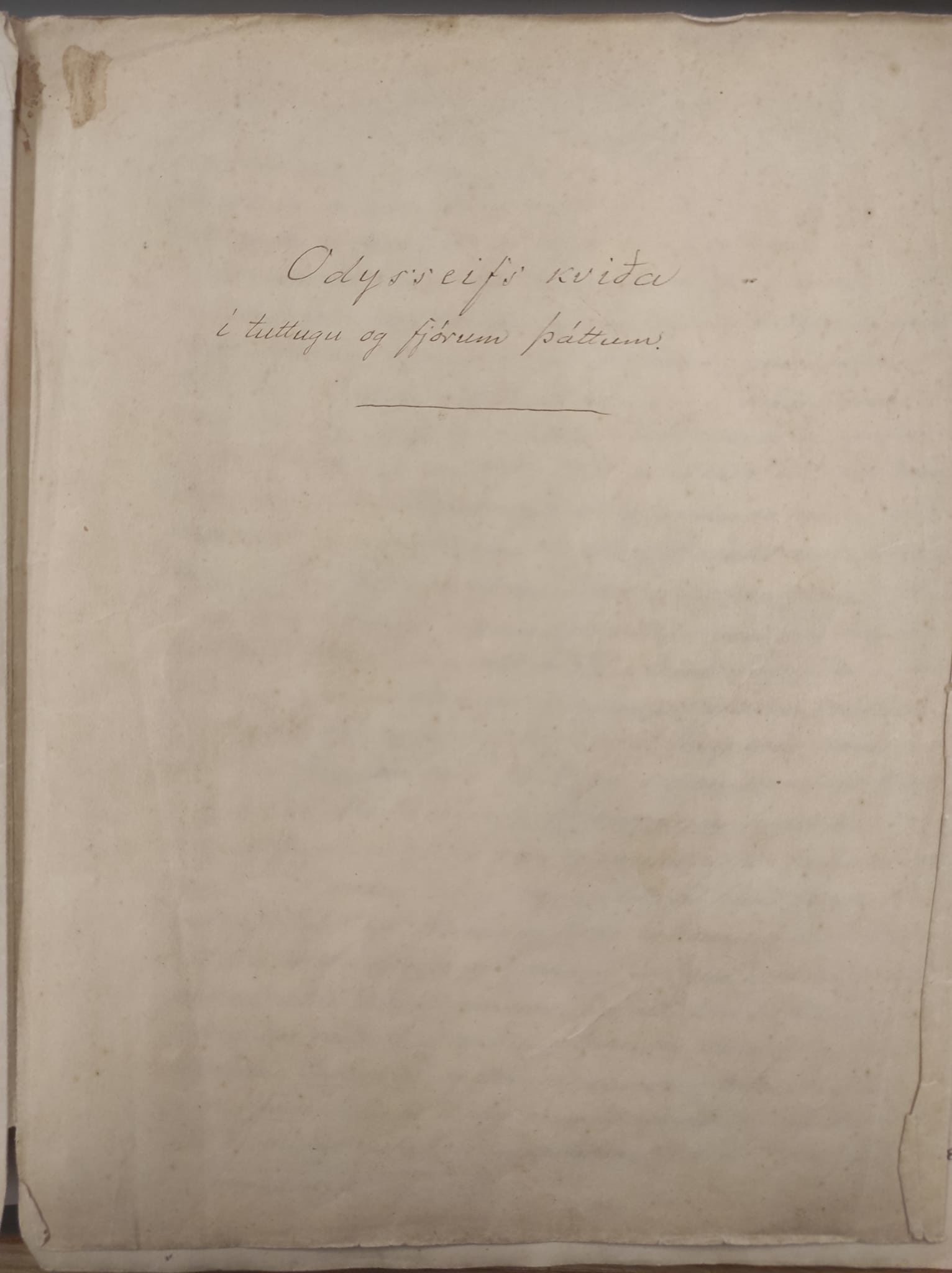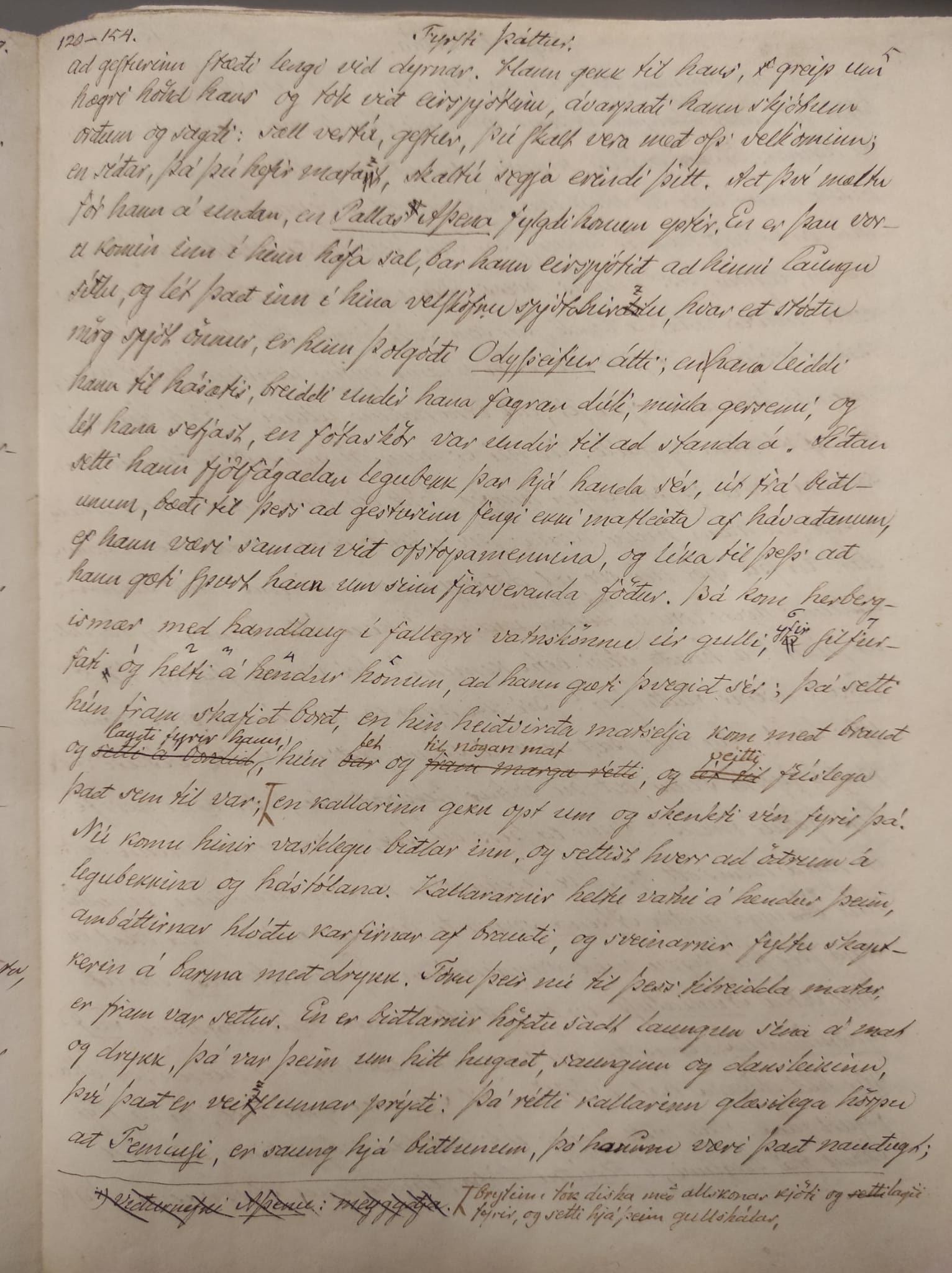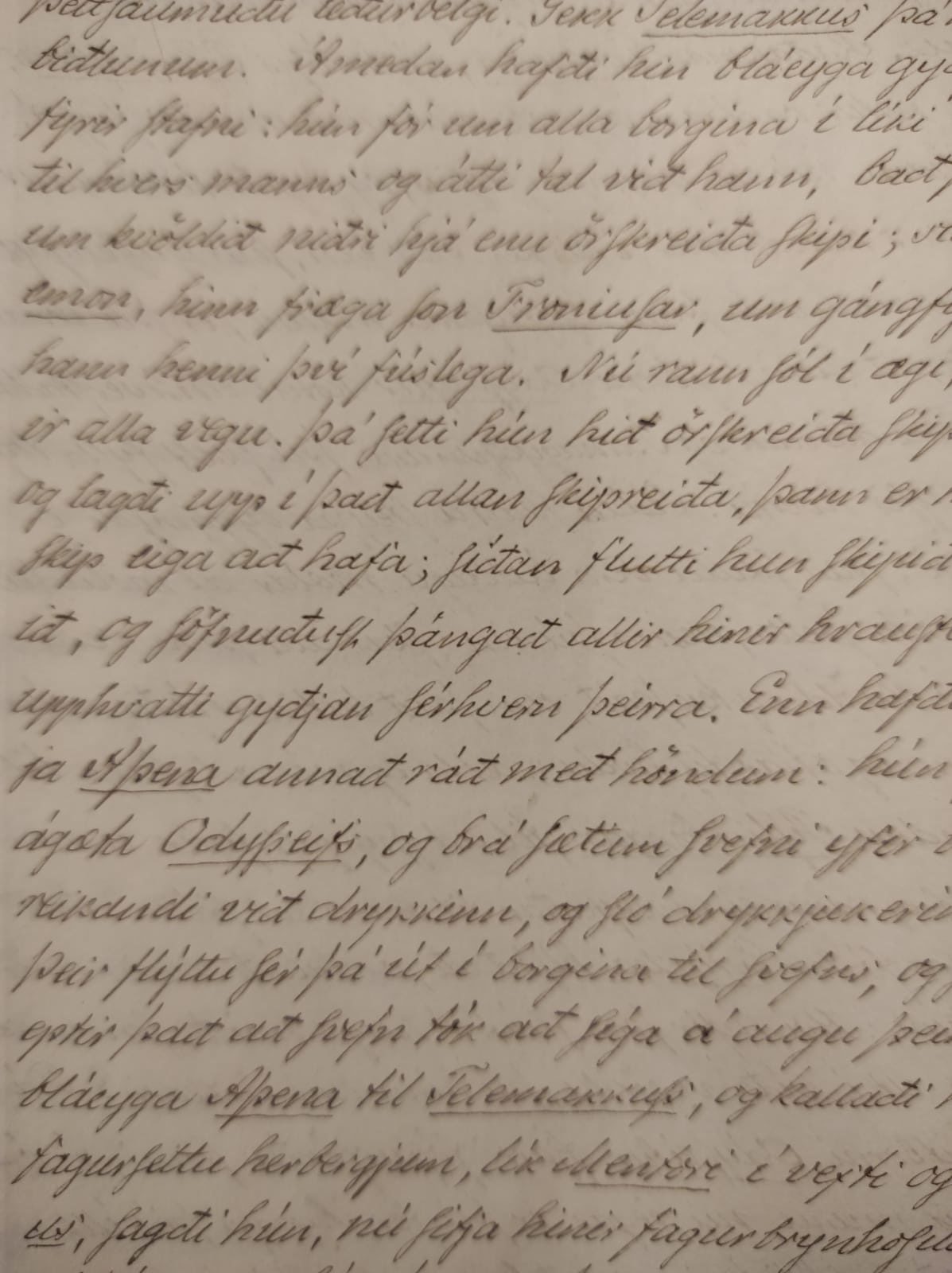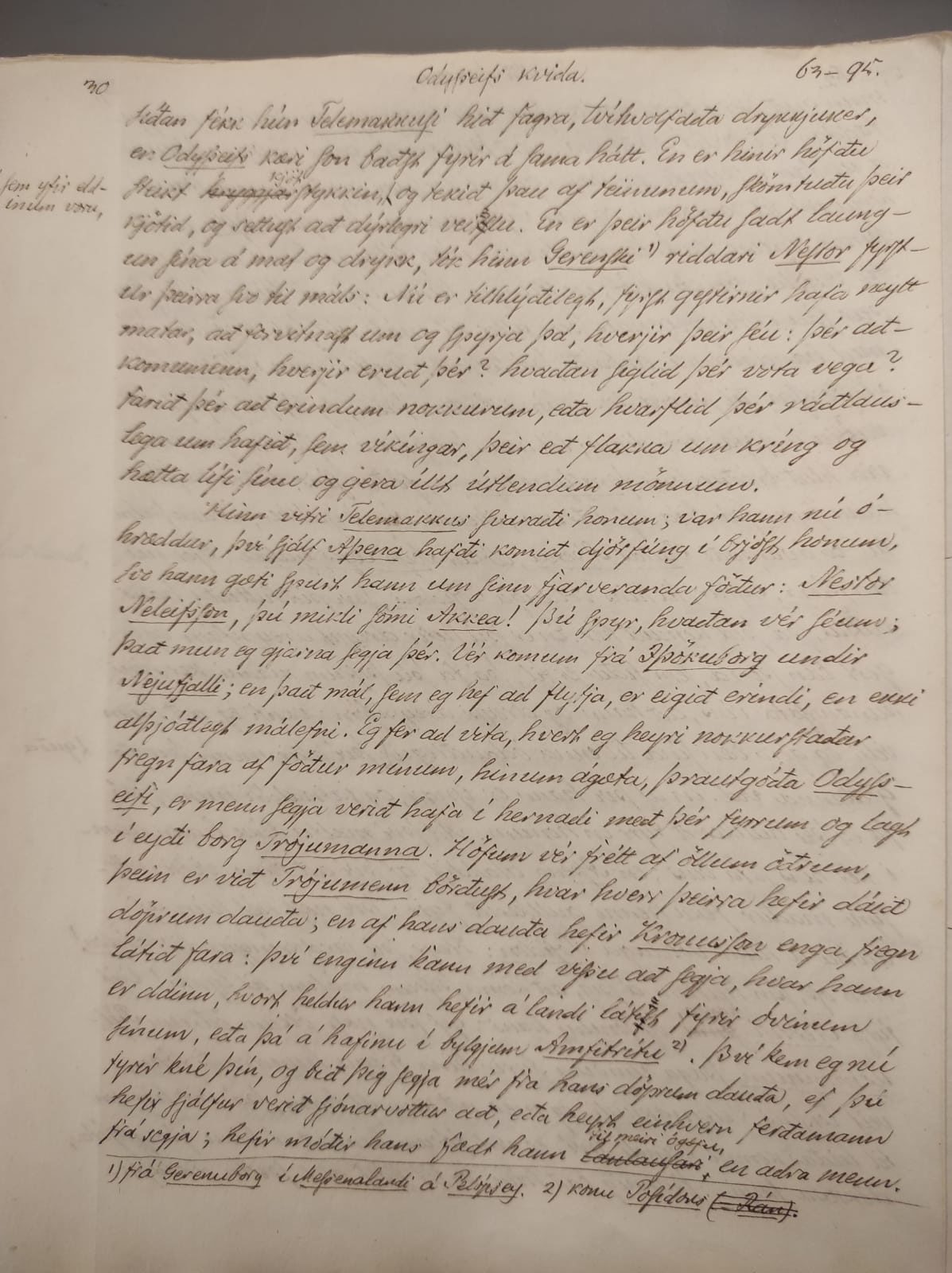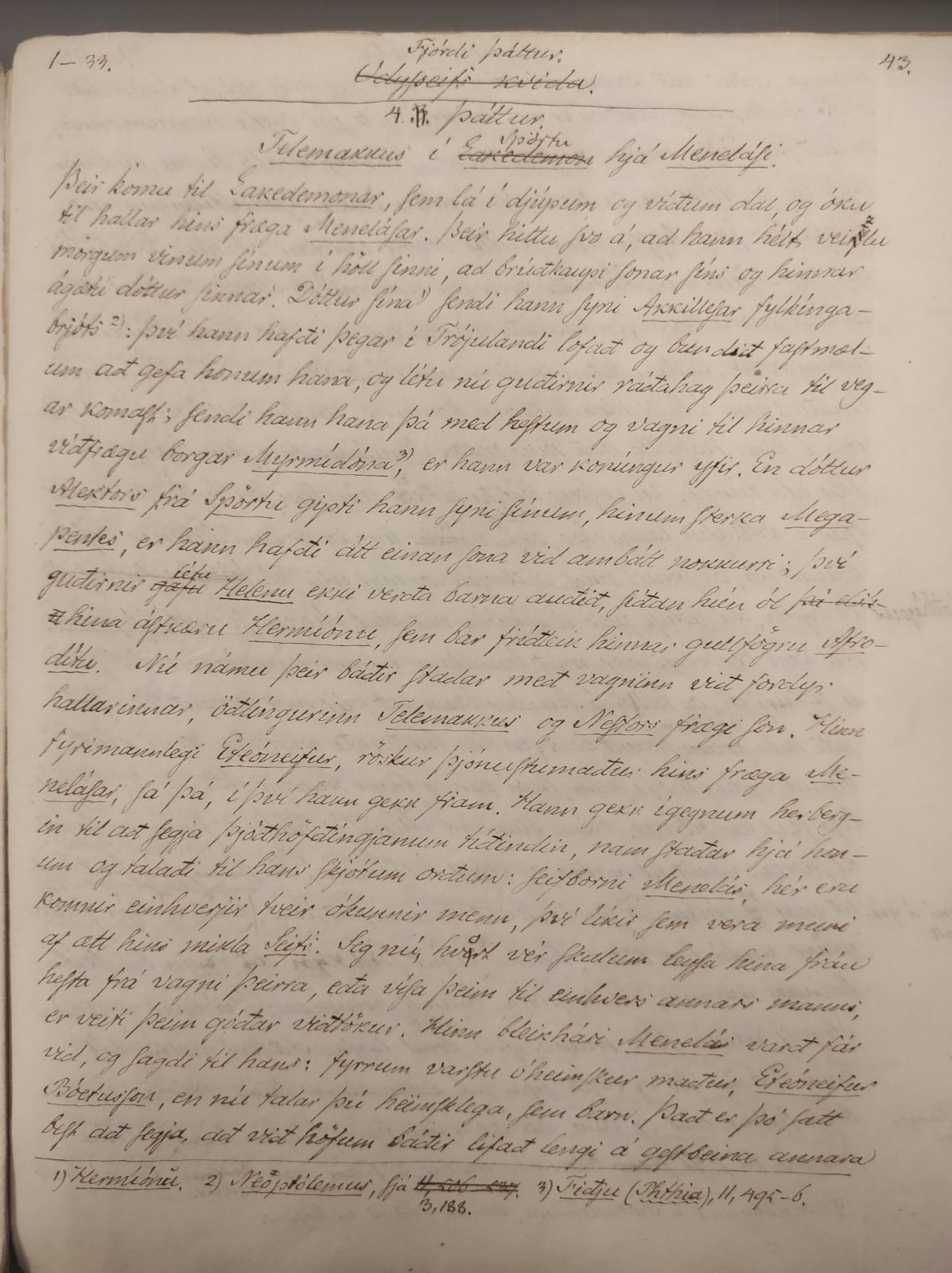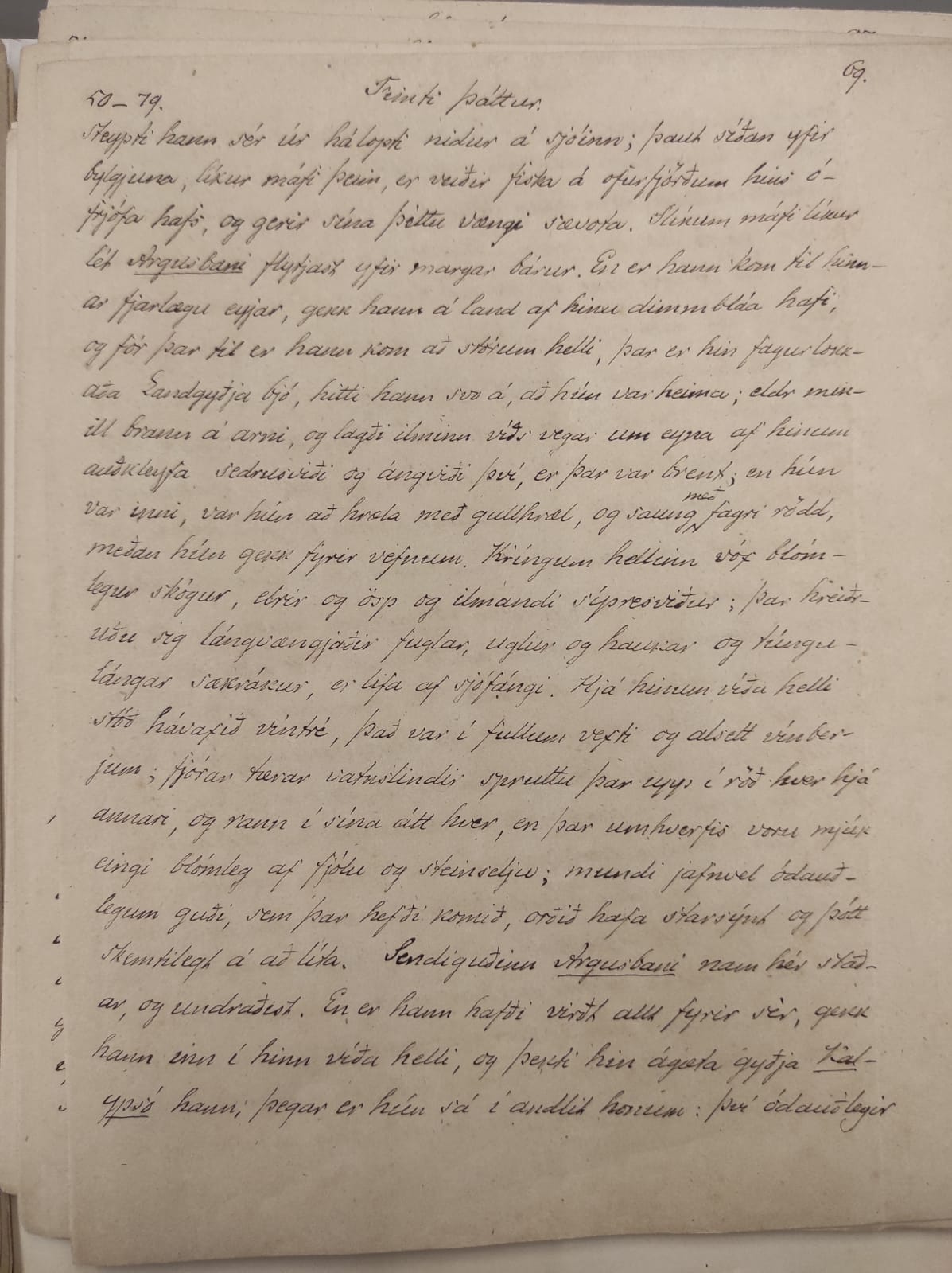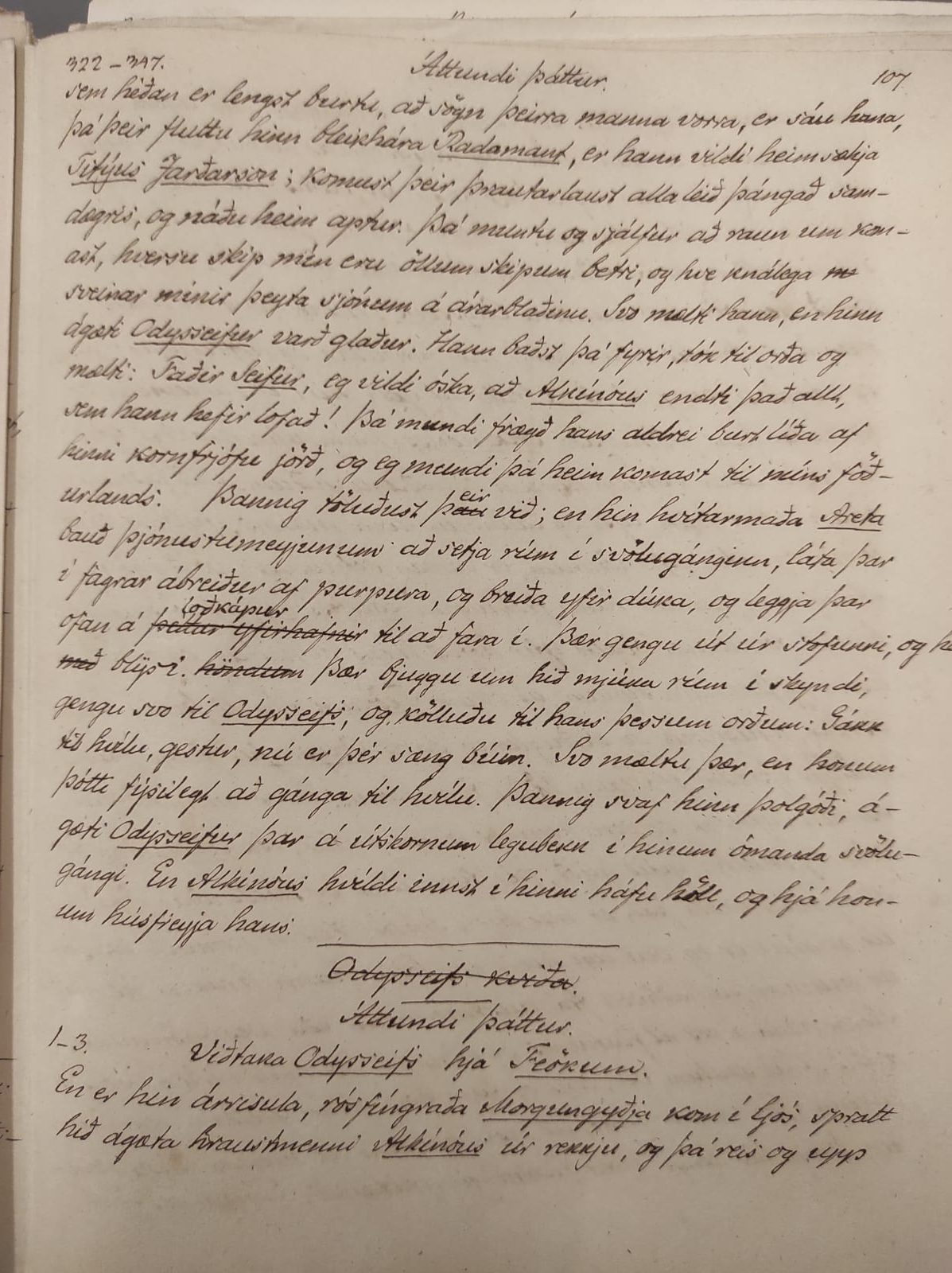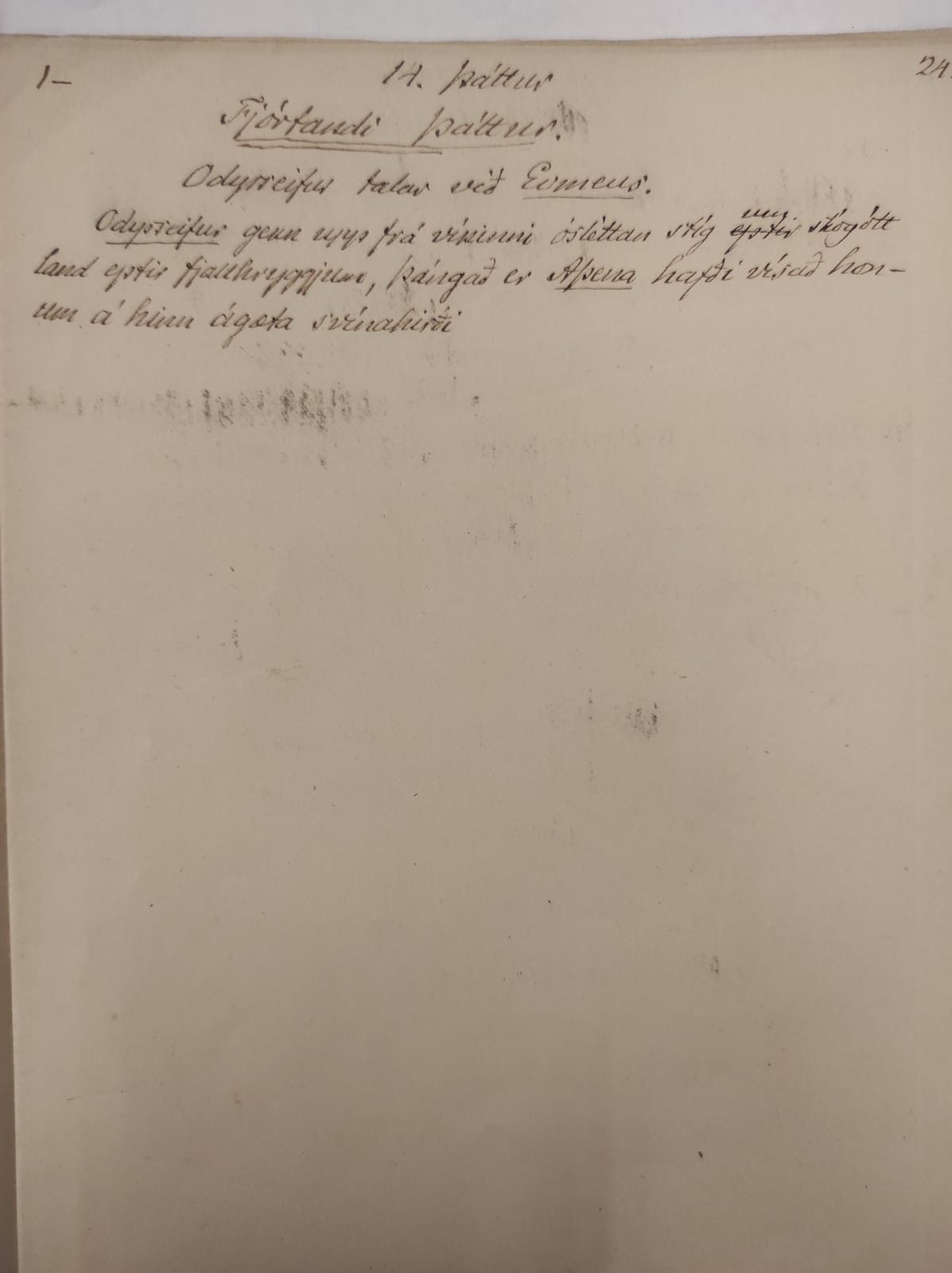The second manuscript is completely different from the first. First of all, this one was kept in a cardboard sleeve, as it is simply sheets, it has no cover. Again, it is by the same author as before, except that it was written in 1840 and 1850. Indeed, this is a relatively long period during which the translator must have abandoned the project and then started again. This detail is of great importance because it shows two things. Firstly, it highlights the difficulties involved in translating a work such as the Odyssey. Secondly, it also shows that the author simply did this translation as a passion and that he had no desire to forget about an Icelandic edition. Moreover, this manuscript is much easier to read than the previous one. This is due to the fact that the pages are much larger. The author is then able to use more space. In addition, the ink is also in better condition. A very interesting element is that the manuscript begins with a few pages that summarize what is happening in the work song by song.
Sometimes there are footnotes but also notes written in the margin. However, these are not really clean, some words and parts of sentences are also crossed out. During the analysis of this document, I also noticed that the author has underlined proper names as if to emphasize them. However, it seems that pages 41 and 42 are unfortunately lost which makes the document incomplete, as well as the translation. Then I noticed that from page 69 onward, the paper is different, it is smaller and brown. Moreover, at the bottom of each page, we have the number of the page, of the verses, and on the left top the title of the manuscript, on the right top the song number. The manuscript ends with the beginning of the 14th song, at the 243 pages, which was supposed to be continue because we can see some white empty leaf at the end.



